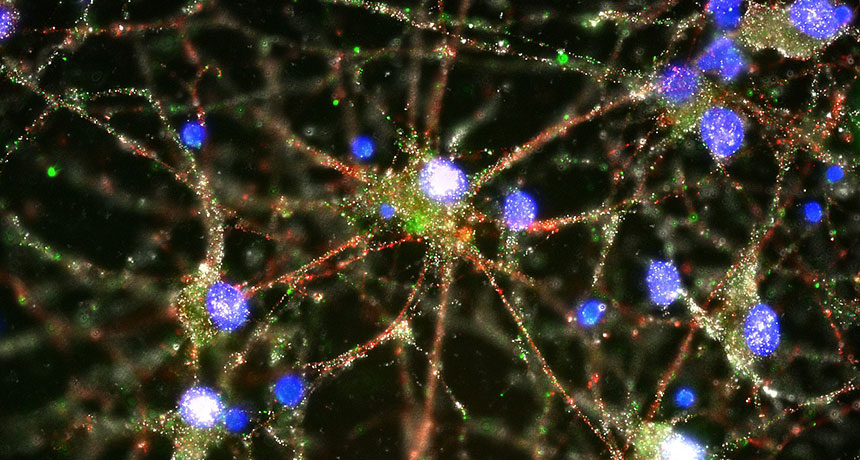Immune system gene leads to schizophrenia clue
Excessive synapse pruning linked to protein variant

CUTTING CONNECTIONS C4 protein (green) is found on human nerve cells growing in a dish (cell bodies shown in blue). The protein may cause people with schizophrenia to lose nerve cell connections, researchers propose.
Image courtesy of Heather de Rivera (McCarroll lab)